Utilizing the lead generation strategies in this post will bring huge results for your business. And building your email list organically rather than buying leads and social media is the best way to bring in more customers.
Email is 40x more effective at acquiring customers than Facebook and Twitter combined! Potential buyers also spend 138% more when marketed via email compared to other channels. That’s a big difference.
According to optinmonster, a lead generation software company, “18% of companies get email marketing ROI greater than $70 per $1 invested.” And “globally, 30% of marketers cite email marketing as having the highest email marketing ROI. This is probably because, for every $1 spent on email marketing, $44 is made in return, according to a study by Campaign Monitor, which equals a 4400% ROI.”
A healthy and large email list is the safest way to safeguard your company from potentially irreversible bans on social media platforms, like when you get hacked and were at no fault.
It’s no wonder why you need to make lead generation a priority in your startup! This post will help you build your sales pipeline and learn key lead generation strategies for email list building and expanding your customer base.
It’ll take some experimentation with A/B testing to optimize your lead generation efforts, but with consistent effort, the strategies we share will help you grow considerably.
As long as you have built customer profiles, validated your startup idea, and know where to find users, then you’ll be able to use these lead generation strategies effectively for your startup. Just make sure that you have these leads automatically go into your email marketing software and your CRM software via the API or an automation tool like Zapier. Then, you can create email nurture campaigns & the sky’s the limit!
1. Host Webinars
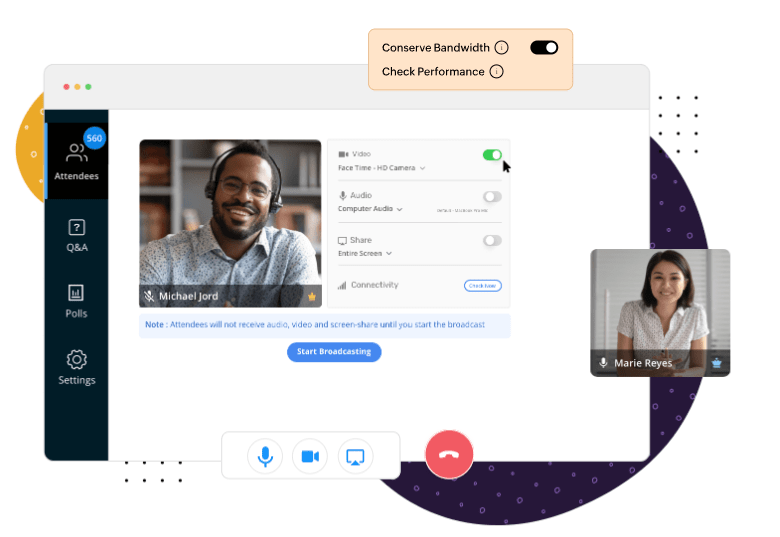
Hosting free webinars are a great way to demonstrate your authority on a subject, give your target market valuable information, and generate interest in your business. Free webinars generate leads since people have to sign up.
They become more qualified leads if they stay the entire time – showing their interest. Webinars are an incredibly powerful lead generation tool for your startup, but you have to do it well if you want leads to convert. Put time into your presentation and your preparation for it, because it represents your business and brand as a whole, and it can leave a lasting impression on people.
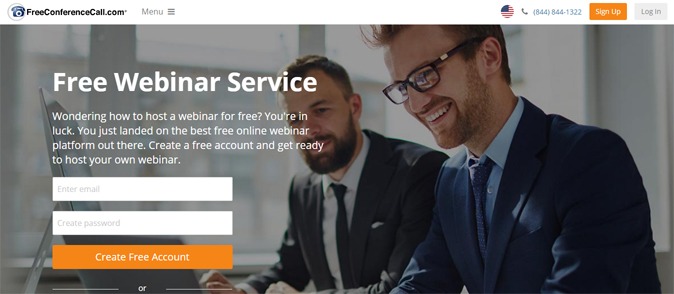
If you want to go the free route, you could try FreeConferenceCall.com. It’s highly capable and free for up to 1000 people. It has the same features of nearly every other large webinar service. Or, check out these other free webinar services.
Most services cost money, but webinars remain to be a very useful tool for lead generation and they can deliver a high ROI. So even if you are paying for a webinar service, you’ll still get great value in return, assuming you’re presenting on a topic your target audience cares about, one in which you are an expert in, & have a good offer.
Other popular webinars and video providers for webinar-like events are:
You can record the webinar and run it every 4-8 weeks. You can make a lot of money or get a ton of subscribers from that! If you can record it, then you should.
Webinars are usually marketed on social media organically, through paid marketing on search engines, software with ads, ads on social media, and email lists.
WordStream produced an awesome article on webinar best practices. Check it out!
2. Lead Magnets
A lead magnet is a promotional piece of content used to get someone to sign up to your email list via your website in exchange for a free PDF, ZIP file of goodies, swipe file, or something similar in nature.
Every startup should have lead magnets because they’re a powerful lead generation strategy. They will enable you to get more subscribers, provide value to them, and create more opportunities to do business with them.
Lead magnets are one of the most crucial aspects of an inbound sales strategy. But they should also be strategically aligned towards your startup or company’s goals. We suggest that you read about how to align those goals in The Ultimate Startup Sales Playbook for Founders.
Take this example below of one of Ramit Sethi’s popups when going to his site’s landing page (also his homepage in this case). His lead magnet is strategically aligned with the purpose of his website, meaning that visitors who subscribe will be more likely to become customers.
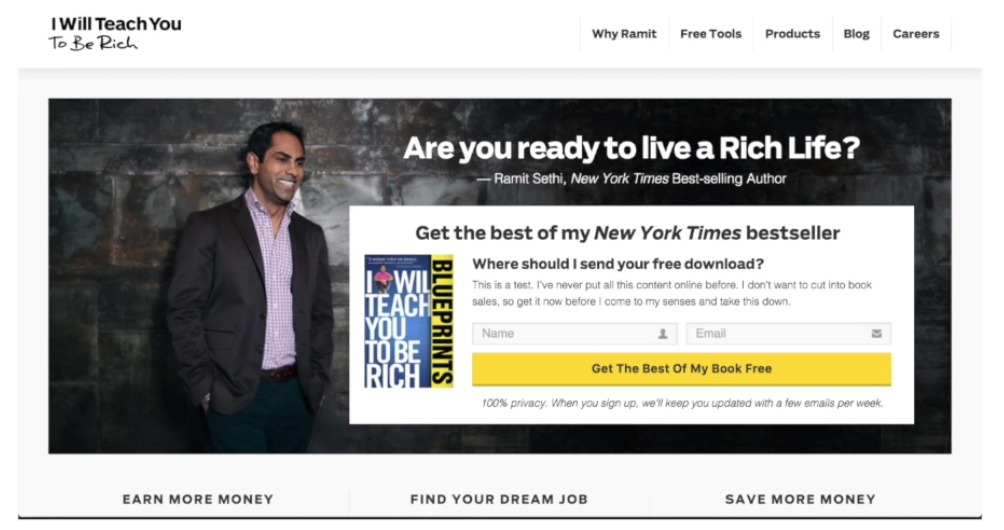
Landing Pages: A Common Area for Lead Magnets
According to Search Engine Land, the average landing page conversion rate for lead magnets is 2.35% across industries.
Now honestly, that’s a low conversion rate that you should not aspire to achieve.
The top 25% of businesses are converting at 5.31% or higher and the top 10% of businesses are converting at 11.45% or higher.
So ideally, you should be shooting for a minimum of 5.31% and do every A/B test possible to find what version of your lead magnet converts visitors into subscribers the best.
However, most startups have more than one lead magnet with different value propositions so they can maximize their lead generation.
Neil Patel wrote a great article for QuickSprout on conversion rate optimization strategies for lead magnets.
Four excellent lead generation services are:
Another example of a lead magnet are quizzes by Lead Quizzes. Their service allows you to create custom quizzes to test visitors’ knowledge on a subject.
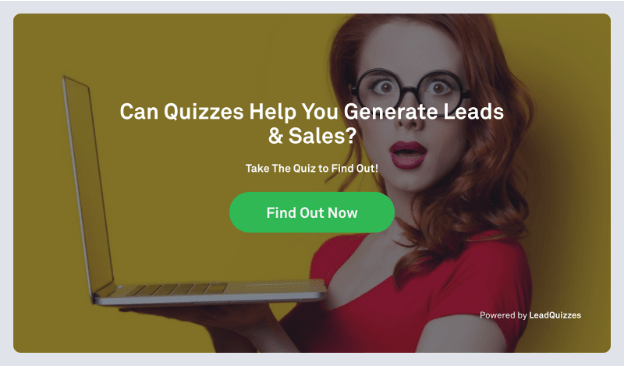
At the end of the quiz, users are asked to enter their email address to get additional resources pertinent to the quiz or perhaps a free guide. This type of lead magnet mirrors a content upgrade, which you will learn more about in #6 of this post.
Quizzes can be fun, informative, or both. If you’d like to learn more about how to make quizzes that generate leads, I’d encourage you to read through their post Quiz Maker: The Marketer’s Guide to Creating Online Quizzes.
3. Individually Contact Your Target Users on Social Media
While individually contacting people is the slowest way to get leads, it’s one of the best ways to get brand evangelists and your earliest customers, especially for a startup. This is true because it allows people from the brand to show the human side of the company and helps those representatives to form a connection with those individuals. Paul Graham of Y-Combinator shares how startups should first do things that don’t scale and this method is one of the most impactful ways to get a startup’s first customers. This is one of the best ways to get your startup’s first 100 and 500 customers.
Where to Find Leads on Social Media
There are a lot of places you can go to find your target users such as LinkedIn groups, Facebook groups, Instagram, TikTok, niche-specific forums and communities on Slack or Discord, alternative social networks, or wherever else your target customers gather.
For instance, you can look at posts of yours that your target customers liked or look at of competitors’ posts on Facebook or Twitter, then see who liked them and contact those people.
This example below shows all of the people who reacted to a specific post on Facebook.
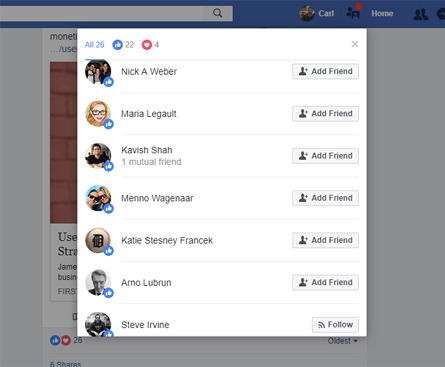
While this effort doesn’t scale, it’s a great way to start an online customer base from scratch or to continue expanding your existing email list. Moreover, you get to show your human side to people when you reach out on social. This can be more appealing on the receiving end of things.
How to go about talking to potential leads
1) Engage with them as human beings, not like sales prospects.
2) Learn about them including their strengths and struggles.
3) Tell them about what you’re doing and ask if they’re interested in what you’re doing.
4) They’re looking for solutions to their problems, so if you have a solution to one of their struggles, then talk to them about it!
5) Ask them if they’d sign up for your waitlist or for your email list.
6) If you have an existing solution to their problem, ask them if they’re interested in buying it. You can give them a special discount with a time limitation so they’re more likely to buy from you.
Remember – you miss 100% of the shots you don’t take, so start contacting your target customers and building relationships with them!
4. Run a Viral Contest, Viral Raffle, Viral Referral Rewards Campaign, or Viral Milestone Campaign
Viral referral rewards campaigns, viral contests, viral milestone campaigns, and viral marketing giveaways are amazing tools for lead generation and publicity.
Why?
Because each person that refers more people and performs more social and sharing actions can get more entries to win and/or unlock special perks. However, it has to be relevant to your target audience. You have to offer something to them that they would want and want to share to receive.
The best way to run these campaigns is by using viral marketing tools. There are well over 25 viral marketing platforms. It’s a pretty crowded market, but almost every one of them has a unique aspect to themselves.
Dropbox was the first company to really start this kind of trend and it worked tremendously. I can vouch for that statement personally as I’ve received tons of free cloud storage via the referrals I sent out to my contacts. Ten years later I’m still receiving benefits from referrals I first sent out. Below is an example showing Dropbox’s referral setup and opt-in.
Their “Refer-a-friend” offer was too good to pass up, on both sides. Dropbox got email contacts of people to market to, and you got free cloud space when they signed up.

When your contest or referrals spread, you can then get your startup or brand in front of thousands and thousands of people.
Every person that enters provides their email address.
So those are instant leads right there.
In many of these contest platforms, you can also force people to perform a double-opt-in to ensure they’re not giving you a fake email address. You may get fewer entries overall, but at least they’ll be real people. And, in many of them, they have anti-fraud filters.
5. Offer Coupons or Exclusive Discounts for Your Product/Service
Coupons are great ways to promote not only signing up for your email list, but also create urgency to purchase your product/service.
There are many different ways to offer your coupons. Most of the time $10 off is more effective than $10% off if the product is worth less than $100. People want to get a significant deal.
The most effective way to find out what coupons work best is by doing split tests, or A/B tests to see which type of deal and what copy used gets the most sales conversions.
Many e-commerce websites will use a top bar that sticks on the top of your website with an incentive for a coupon that’s received upon subscribing.
Other websites have regular popups with coupons (see example below) while others will do one-time coupons with deep discounts for annual subscriptions.
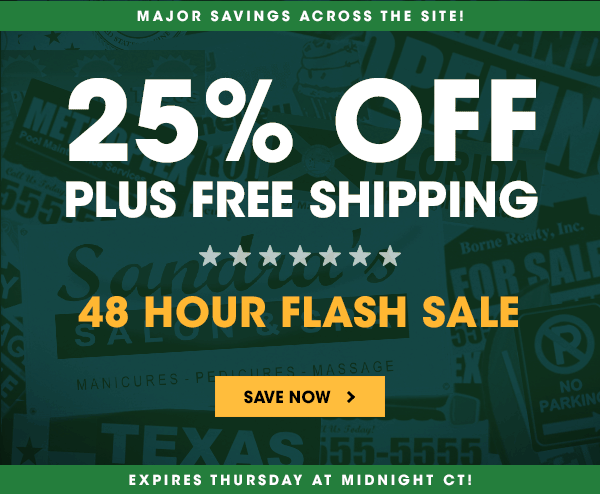
6. Acquire Leads through Content Upgrades via Lead Generation Software
What’s a Content Upgrade?
A content upgrade is when you post an article or piece of content on your website and then you offer it in PDF version or offer a bonus that’s directly related to that content in exchange for them to opt-in to your email list.
Essentially, it’s another form of a lead magnet. It can be a popup box, a popup welcome mat, a link from within your content, a link in a fancy box from within your content, in a sidebar widget, or any combination of these lead generation strategies.
Content Upgrade Example
Below is an example of a content upgrade from Sumo’s Sales Email Guide. They have the whole post on their website, but they offer it in PDF and include a bonus with sales templates.
Setting up Content Upgrades
You can integrate your content upgrade lead magnet with most email hosting providers, as long as you’ve purchased a pro version of the software. No free version, from my research, allows email integrations, but these things can change in time based on shifts in brand strategy. People can manually add subscribers to their email service, but if a site is getting a lot of traffic and leads, then it can become quite tedious.
I found a nice little shortcut to provide the content upgrade without any special automations. I use my Mailchimp or Google Drive to upload my content upgrade and then I’ll fetch the link to it. Once I have that, I put it into my lead generation software and after someone has subscribed, a success popup shows with the link to the content upgrade. OptinMonster and Sumo both support content upgrades.
Thanks to Opt-in Monster’s article 30 content upgrade ideas to grow your email list, we have boatloads of examples of lead generation tactics for your startup.
Another great resource for creating content upgrades can be found at backlinko.com. It helps you understand the selling aspect of content upgrades so that they can have the maximum efficacy for the highest conversion rates.
What’s more, using the strategy from Brian at Backlinko, I’ve achieved a 55% conversion rate of people who clicked on my content upgrade for my executive summary post.
Please be aware that this section contains affiliate links to Poptin, OptinMonster, and Content Upgrades.
7. Use Lead Generation Software for LinkedIn
LinkedIn is the #1 place for B2B companies to do business. This is no exaggeration. In 2023, they boasted approximately 900 million users worldwide and 58.4 million companies are registered on LinkedIn with about 310 million monthly active users. The United States provides the greatest number of users at approximately 200 million people, then Europe with 236M+, and Asia Pacific with 254M+. And if you’re into digital marketing, you’ve probably heard about automated lead generation software for LinkedIn already. Haven’t you?
Automated Lead Gen Software
Automated software provides a rapid method to reach and connect with many thousands of users without having to manually search for and connect with people, saving boatloads of time. There are tons of these apps out there, ranging in pricing and features.
Many operate as chrome extensions. But even more work as browser-based software that’s hooked into LinkedIn’s API. Some are freemium, free trial oriented, some are pay-to-play, and some offer money-back guarantees.
When you combine paid plans for these lead gen apps so you can integrate them with your marketing CRM, you can mount even larger campaigns and better track your history with those people.
These apps will allow you to do connection request messages with a note, which is where your message would go, or via InMail messages (throttled for basic users). Basic LinkedIn plans will also throttle connection requests per month.
However, there is a downside to automated outreach. It’s essentially cold outreach (warmer if you only reach out to 2nd degree connections) and the messages are canned. Meaning, the initial messages you send are not customized to each person’s background. The only exception to the customization is that you can personalize them to use people’s names and their company names in messages.
Various Features of LinkedIn Lead Gen Tools
- Dynamic Personalization
- Smart and Unified Inboxes
- Webhooks
- Safety and security measures
- Company pod creation tool
- Multi-user collaboration
- Brand tracking
- Content management
- Social Analytics
- Email verification
- Email finder
- Visitor tracking
- Slack integration
- Profile scrapers
- Network boosting tools
- Personalized message sending tool
- Auto-commenter/liker/endorser tools
- LinkedIn group email scraper
- Message LinkedIn group members
- Prospect management with notation
- Internal CRM
- Email sequences
- Autoresponder
- Advanced reporting and statistics
- Hyper personalized targeting
- CSV imports and exports
- Team blacklists
- Chrome extension
- Instant messaging via WhatsApp and SMS
- Multichannel sequencing
- AI assistants
- Cloud capability
- Custom filtering
- Lead scoring by engagement
- Profile visitor
- Post scheduling
- High engagement content idea generator
- Tool integrations
The top 26 LinkedIn lead generation tools
If you combine one of these with LinkedIn’s Sales Navigator, you could unlock powerful outreach capabilities. Sales Nav starts at $99, and if you add that to the minimum cost of a paid LinkedIn lead gen tool, you could be paying $115 to $250+ USD/month.
So you have to have the money for both to get the most features. If you don’t have the dough, then you can start out with the free plans and build your way up until you can afford it.
Sales Navigator
When lead generation tools are combined with LinkedIn Premium, especially Sales Navigator, you will unlock one of the most potent methods to network, generate leads, and do business. However, the price is steep, starting at $99/month.
Sales Navigator has very advanced searches and unlimited searches, whereas basic plans are capped for both. It allows you to make custom lists to organize your workflow and keep track of leads, accounts, and existing clients. You can see all of your notifications and who viewed your profile, so you can better gauge people’s interest.
In 2023, 60% of global users were 25-34 years old. Younger adults obviously see it as a great place to do business.
82% of B2B marketers obtain their greatest success with LinkedIn when compared to other social channels. 35% of B2B marketers ranked LinkedIn as the most important social media network overall in 2021. And in 2021, there were fewer users using automated software for lead generation on LinkedIn.
8. Create a Free Trial for Your Product/Service
Free trials are an awesome lead generation tactic which will help you get more than your foot in the door with your target customer.
If you can offer your visitors a free trial, then you just reduced their barrier to entry. Meaning, you brought them one step closer to buying your product or service.
Not only do you get their email address, but the visitor took a crucial step in terms of behavioral marketing.
Behaviorally, for every additional action they take on your site, they’ll become more comfortable with you every time they perform an action.
What’s more, it brings them another step closer to buying from you.
The fewer barriers to entry, the easier it is to turn them into a lead or customer.
If your free trial has no credit card required then the barriers are completely removed. All they need to do is provide their name and email address.
Below is an example of a home page with a free trial with no credit card required as the first thing you see on the Close.io page, Steli Efti’s sales-based CRM.
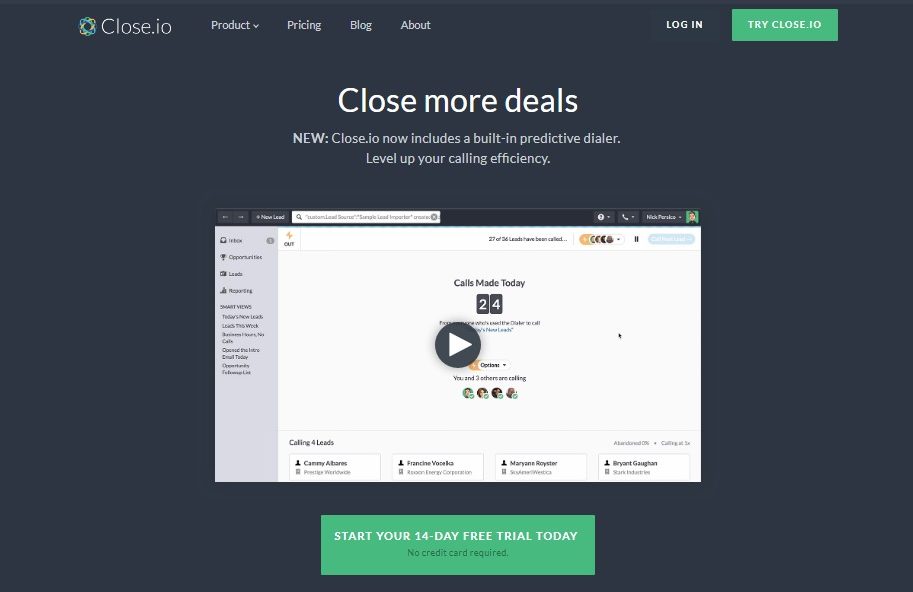
The more barriers to entry, the harder it usually is to turn a visitor into a lead or customer. There are exceptions, like in everything else.
However, if they have to use their credit card to opt into your free trial, there will be a larger barrier, but you still get them closer to buying because you already have their credit card information. It makes it easier for them to buy when the free trial is over.
So there are pros and cons to both ways.
9. Create Gated Content on Your Website for Lead Generation
Gated content is a type of lead magnet. In fact, every lead magnet is also gated content. It’s content that you can only view if you are a subscriber, member, or perform a certain action. If you publish content consistently, it can be an effective way to get subscribers, especially on your highest traffic pages and posts. Many news publishers have gated their content so you can only view five or fewer free articles a month unless you subscribe.
Types of Content to Gate for Lead Generation:
- E-book
- Course
- Webinar
- Checklist
- Template
- A discount
- Media
- Community
- Tool
- Whitepaper
- Case studies
- Blog articles
- News articles
There Are Three Types of Gated Content:
- Partial Free Access to Blog/News: Provide some blog articles for free and gate the rest, requiring that you subscribe for free or sign up for a paid subscription
- Free Plan Subscription: Gated content available only when someone subscribes for a free plan
- Social Media Sharing: Gate any content with the stipulation that it gets unlocked when someone shares the web page on social media
You can have multiple guides or locked pieces of content, but having too many of them all in one place, like on one page, will often turn away visitors from getting that content.
The exception here is if they get ALL of the content on that one page by subscribing once.
Lead magnets needs to be spread out throughout your website, and those guides need to be very good and visually appealing. You can use design tools like Canva, Adobe InDesign, or Designrr for them.
But, if they don’t provide the user value, they won’t come back for more and they’re less likely to convert to a customer.
Don’t gate small-time content that’s not going to be very valuable to the user. In my opinion, it will just piss people off. Quality over quantity, my friend.
Below is an example of a quality piece of gated content.
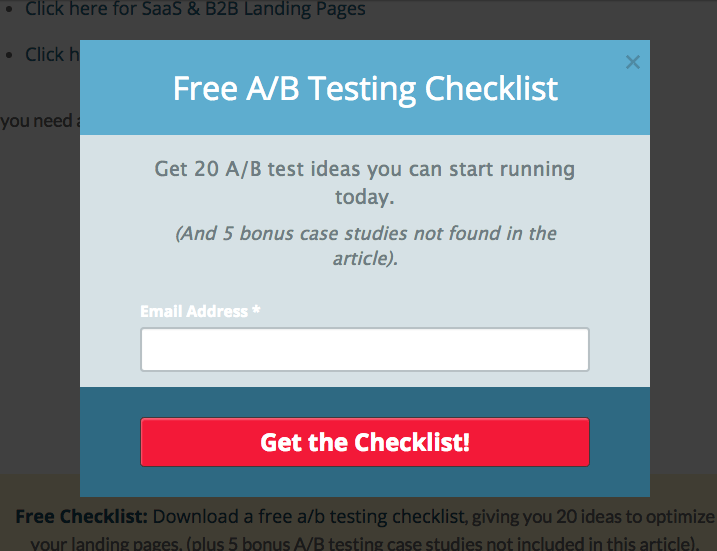
If you have a login portal for users to view the content when they’re signed in, that could reduce the barrier to entry if you want to keep a lot of content gated. And if they keep coming back for more content required via login, you can track their sessions events, and get better behavioral data.
10. Convert Old Visitors into Leads and Sales with Remarketing Campaigns
Remarketing campaigns are a great way to generate leads and regenerate interest from old visitors because at some point they had some interest in your startup or business when they visited your website.
Both Google and Facebook offer retargeting campaigns using Google Analytics and a pixel tracking code, respectively.
Facebook uses a pixel tracking code which you have to install in the header of your website while Google uses Google Analytics (you have to enable the option to track for retargeting in your Admin panel).
With remarketing, you have a chance to re-capture these people who visited your website, but you have to give them a really good reason to come back and a really good reason to opt-in to your email list or buy your product.
A great reason for them to opt-in is by offering a free e-book or awesome checklist which would interest them via an ad on Google or Facebook.
In addition, you’ll want to do this on a specific landing page so there are no distractions from the original CTA you had in your remarketing ad.
You can also target people who visited your pricing page or abandoned their cart and never completed their purchase checkout.
So in that instance, you’d probably create a great coupon with a time limit on it to get them to purchase ASAP because they’ll have FOMO, or the fear of missing out.
Who to Remarket to
When you initiate remarketing campaigns, a crucial aspect of generating higher quality leads is for you to remarket to the individuals that had multiple page views, increased time on page, and micro-conversions such as playing a video or button clicks.
When you do this, you will have a much better chance of converting those old visitors into leads.
What’s more, people who visited specific pages on your blog or website that may directly relate to your product or service would be a good demographic of people to target your ads to.
Conclusion
This post outlined ten ways to generate leads and now you have to go out and try doing it for yourself.
You may have tried some or several of these lead generation strategies, but the most important thing about lead generation is that they’re qualified leads.
Qualified leads are leads that meet the qualifications of your target users.
So whatever lead generation strategy you choose, make sure that it’s one piques the interest of people who match your buyer persona, or else your leads will be meaningless.
And finally, the last lesson to share with you is that you should A/B test each lead generation strategy as much as possible. The more you do it, then the higher your conversion rate will be for turning visitors into leads.
Who doesn’t want high conversion rates?
This concludes our post on lead generation strategies. We hope you found it to be helpful for you. If you did, then we would be grateful if you share it on social media.
Are there any highly effective lead generation strategies you’ve used that are outside of this list or which one from this list have you found to be the most powerful generator of leads for you?
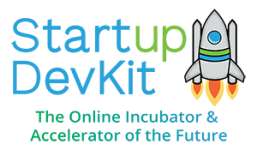
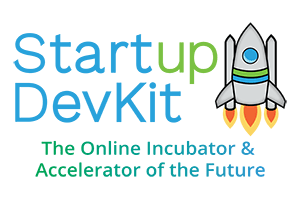

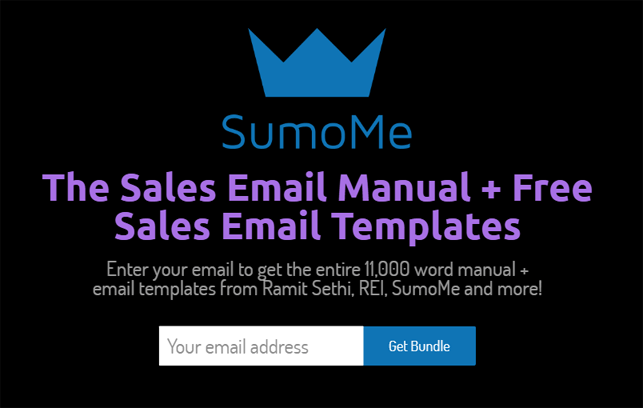

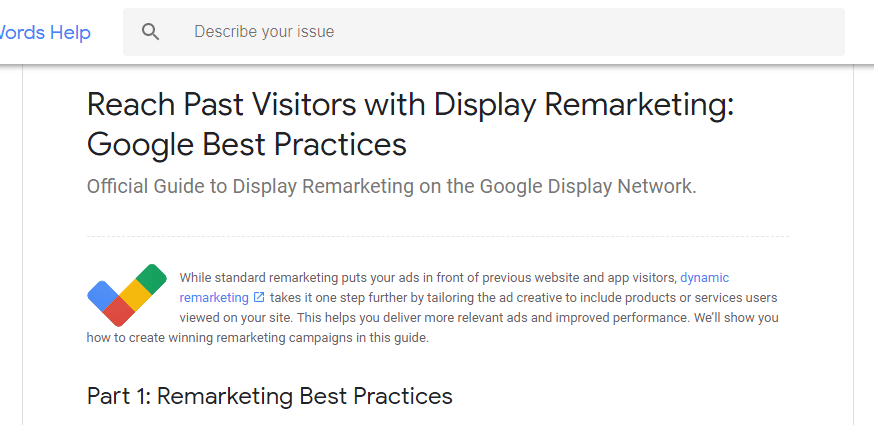


4 Responses
Awesome post. Thank your for sharing such a nice article.
Thank you! Happy to share, Jennifer. 🙂
Thank you for good review of 10 lead generation methods.
Here are 3 working lead generation techniques for startups:
https://digitalmind.guru/how-to-get-leads-for-startups-3-effective-techniques/
Hint: 3 best techniques DON’T contain SEO, PPC, or SMM
Thanks Normann! Nice article you wrote. Cold email, display advertising, and guest blogging are indeed 3 great lead generation activities for startups. Thanks for sharing.